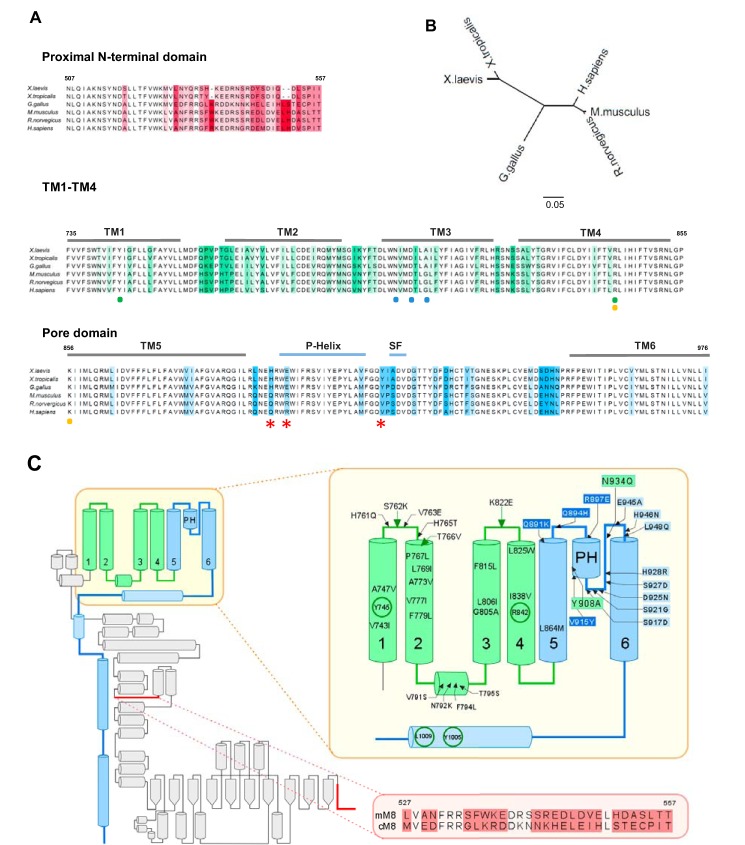Figure 7.
TRPM8 channels during vertebrate evolution. A, alignment of three different regions: proximal N-terminal domain (upper panel), TM1–TM4 domains (central panel), and the pore domain (lower panel), of X. laevis, Xenopus tropicalis, G.gallus, R. norvegicus, Mus musculus, and Homo sapiens orthologs of TRPM8 using ClustalW (76) and Jalview (77). Numbers correspond to residues in mTRPM8. Red asterisks indicate positions conserved in cTRPM8 and xTRM8 but not in mammal orthologs. Dots denote residues critical for the sensitivity of TRPM8 to menthol (green), icilin (blue), and voltage (orange). B, a phylogenetic tree was reconstructed with the neighbor-joining method (78) using MEGA7 (79) and FigTree v1.4.3. C, model of the TRPM8 subunit showing its secondary structure elements (modified from Ref. 21). The first four transmembrane domains involved in the potentiated menthol response of chicken TRPM8 and the TRP domain are colored in green, nonconserved positions between mouse and chicken are indicated. Critical residues for menthol sensitivity of TRPM8 channel are highlighted using a green circle (20, 22). Regions involved in the TRPM8 cold response are colored in blue: the C-terminal domain (26), and the pore domain (this study). Within the pore loop the nonconserved positions are highlighted in dark blue (N-terminal part) and light blue (C-terminal part). The green squares in Asn-934 and Tyr-908 positions indicate mutations that impact both the cold and menthol TRPM8 responses (39, 60). The distal and proximal N-terminal regions that influence general mechanisms of gating and trafficking are highlighted in red (29, 46) and this study). The zoom-out of the proximal N-terminal domain shows the detail of the sequence alignment were nonconserved positions are located. Panel C was modified from work that was originally published in Science. Yin, Y., Wu, M., Zubcevic, L., Borschel, W. F., Lander, G. C., and Lee, S.-Y. Structure of the cold- and menthol-sensing ion channel TRPM8. Science. 2018; 359:237–241. © the American Association for the Advancement of Science

